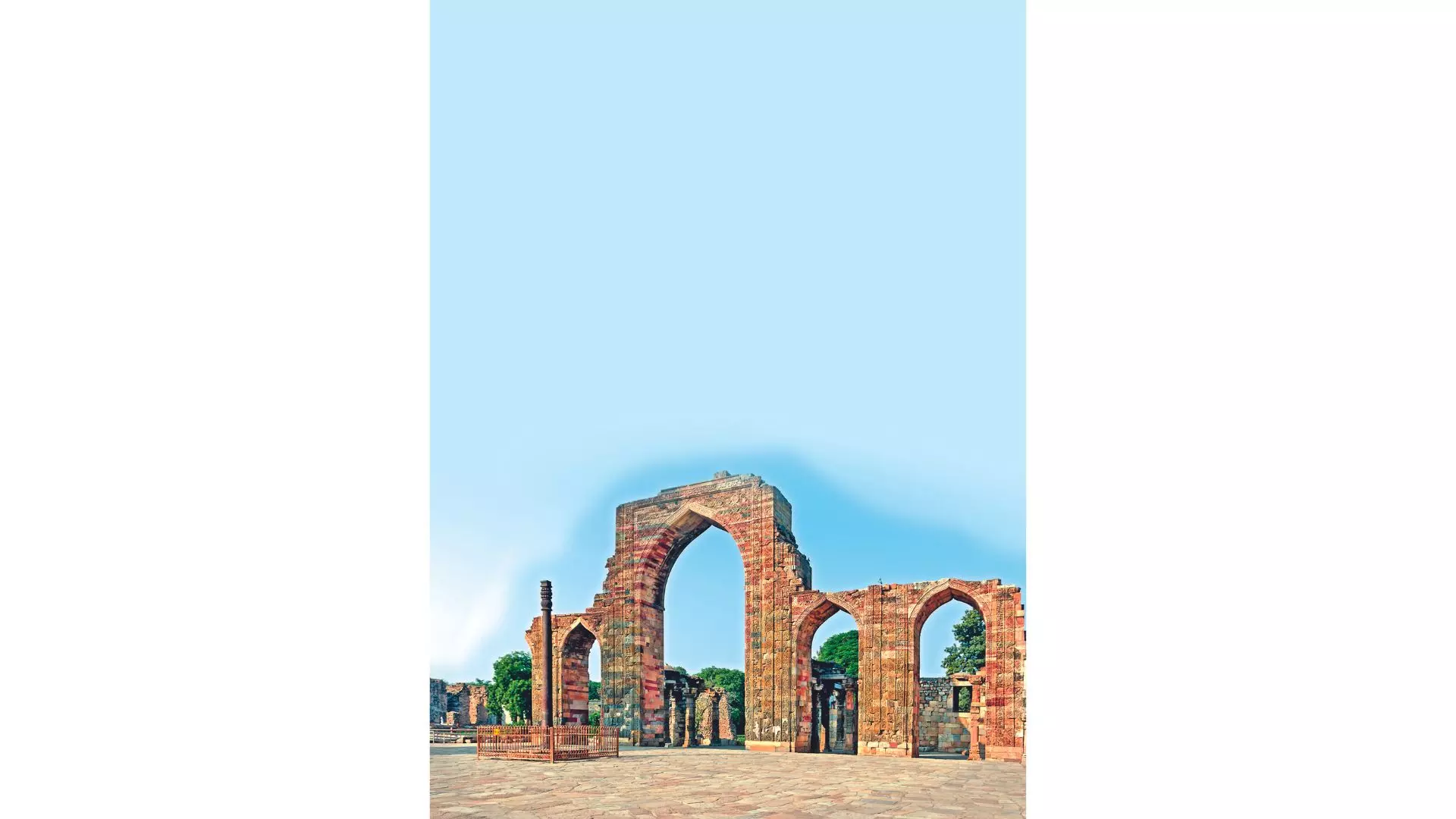A visual feast

Through stunning images and minimal narration, 108 Portraits of Indian Architecture delves deep into the holistic aesthetics of our country, be it the rich south Indian temples, church architecture in Kerala, the influence of Islamic rulers, or modern-day buildings like the Ambani residence Antilia and the Nazrul Tirtha building in Kolkata.
“This book is like a taste multiplier that will help enrich the palette and serving of the veritable moving feast which Indian culture and heritage have to offer,” author Alka Pande notes and adds, “What I realised after three decades of teaching was that most of the students were really far removed from Indian aesthetics and philosophy. It was important for them to know and understand the traditional canons of Indian art. Only then could there be a complete understanding of traditional, modern, and contemporary Indian art.”
Exploring India’s architectural tapestry
Dividing the evolution of Indian architecture into four clear categories: pastoral caves and dwellings, urban planning in the Indus Valley, Indo-Islamic in the North and South, and Hindu emergence of temples: Nagara, Vesara, and Dravidian, the book gives a great overview of its transformation into its current shape.
The book traces the origins of modern design right from the beginning. While the architecture that flourished during the Mauryan period was mostly rock-cut architecture of a Buddhist lineage, such as stupas, monolithic pillars, monolithic shrines, and several rock-cut chambers, the Gupta Period, also known as the classical age, gave India’s greatest treasure in the form of cave architecture—the Ajanta and Ellora caves—and has been dated to this period.
The advent of Islamic rule in the Indian subcontinent around the end of the twelfth century brought about new decorative forms, techniques, motifs, and artistic ideals that also enriched the architecture.
Many of the country’s heritage buildings trace back to the Delhi Sultanate period. This whole new school of Indian architecture, which is referred to as Indo-Islamic or Indo-Muslim architecture, continued to flourish under Mughal rule, which began under Emperor Babur in the sixteenth century.
The current contemporary architecture is shaped by many, including Le Corbusier, who is credited with designing, planning, and constructing India’s first Prime Minister Jawaharlal Nehru’s dream city—Chandigarh.
A holistic overview
The book covers major structures from across India, from Udayagiri Caves in Madhya Pradesh to the Palaces of Gwalior and the Stepwell of Patan to Hyderabad’s Golconda Fort, each of which has its own distinctive style.
Since the author has looked at the built heritage through an art historical timeline, she says that each segment has its own signature building. “In ancient India, it was Ajanta and the temple site of Ellora. The Rashtrakutas in western India built some wonderful temples. From medieval India, Humayun’s Tomb in Delhi and later Fatehpur Sikri are two of my favourite sites. In the modern period, Rashtrapati Bhavan is a site of great grandeur and showcases the might of an imperial power. The Matrimandir in Pondicherry is steeped in minimalism, whereas the Lotus Temple in Delhi, created for and by the Bahai community, is both visually and functionally appealing,” she notes.
In spite of India’s rich architectural history, contemporary architecture often prioritises concrete jungles over sustainable and culturally sensitive design.
Alka reflects on this and answers, “There are many factors that contribute to this, like cost management, a rapidly growing population or overpopulation, urbanization, the market requirements for modernism, the lack of time for preparation and commission of these, and many more reasons that have led to us living in the concrete jungle that you call it.”
One of the biggest challenges in bringing out the book was sourcing the images for the book. When the key images were difficult to procure, the author found a solution by using images of similar buildings, thus illustrating the key elements and style of architecture. Since India has had a continuously changing patronage, from Hindus, Jains, Buddhists, Sikhs, and Islam to colonial rulers, the extensive diversity of building styles is enormous. To encompass them in 108 images was also no easy task. The book gives a clear look at the art and history of architecture, helping readers grasp urban and built design by exploring various styles, trends, and materials.
The author takes the readers on a personal journey through Indian architecture. She shares, “The monuments I have selected are subjective. My aim is to share the joy and pleasure of my architectural journey, illustrated with unforgettable examples that engage me personally. This book is a taster of the rich and lavish feast of the adbhutam or wonder and awe of Indian architecture, where I am the storyteller.”
“The monuments I have selected are subjective. My aim is to share the joy and pleasure of my architectural journey, illustrated with unforgettable examples that engage me personally. This book is a taster of the rich and lavish feast of the adbhutam or wonder and awe of Indian architecture, where I am the storyteller.” — Alka Pande

